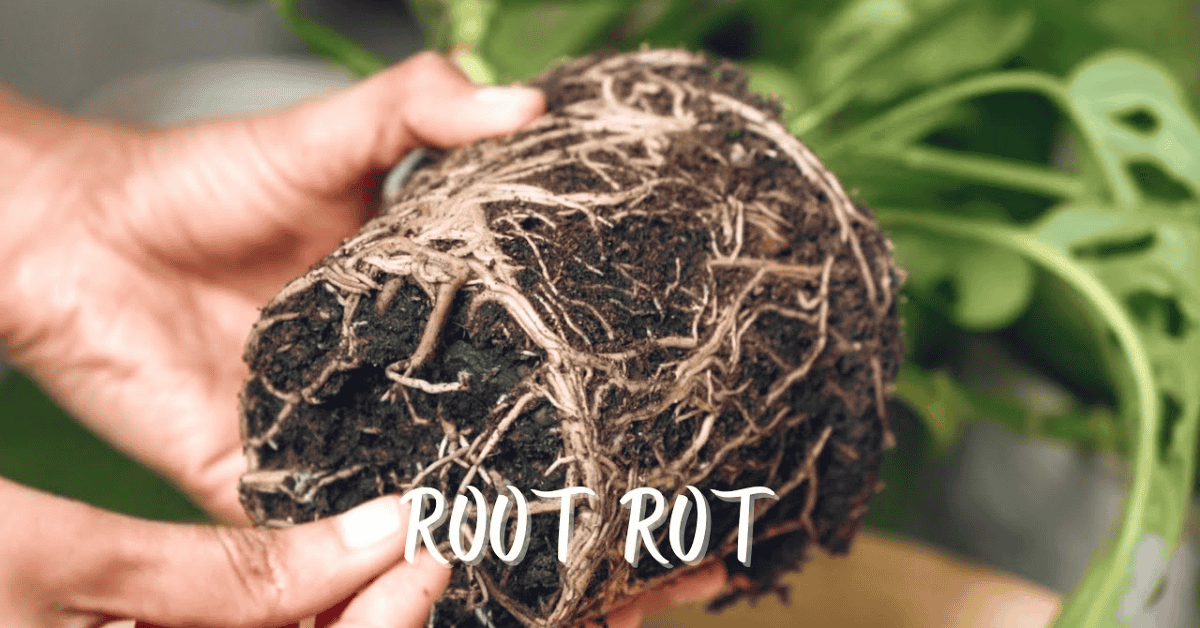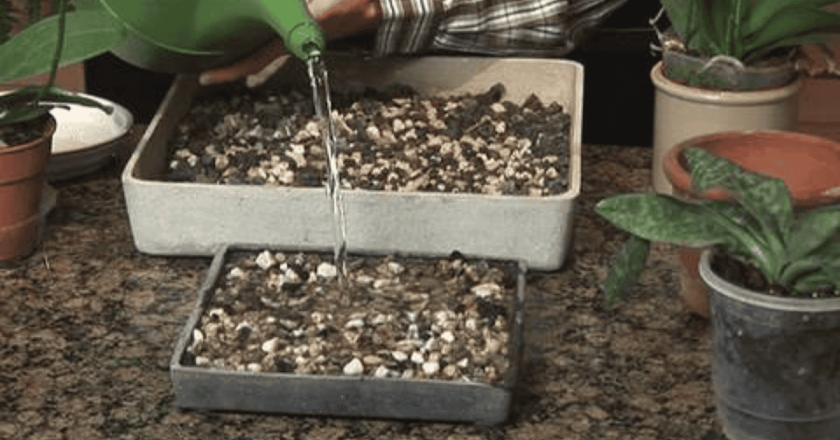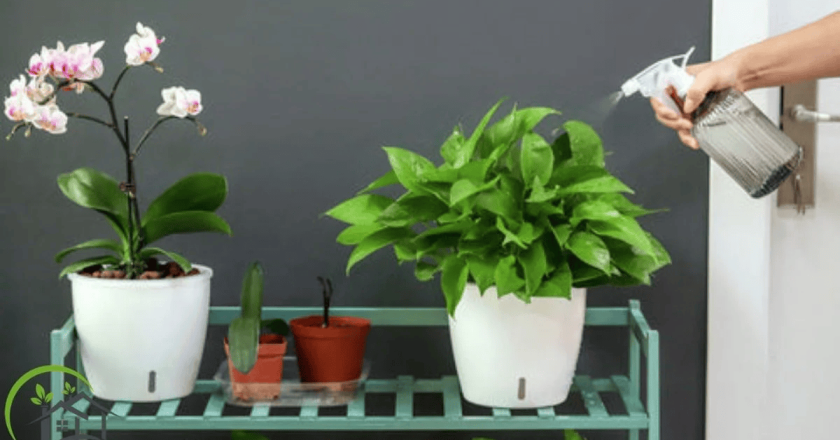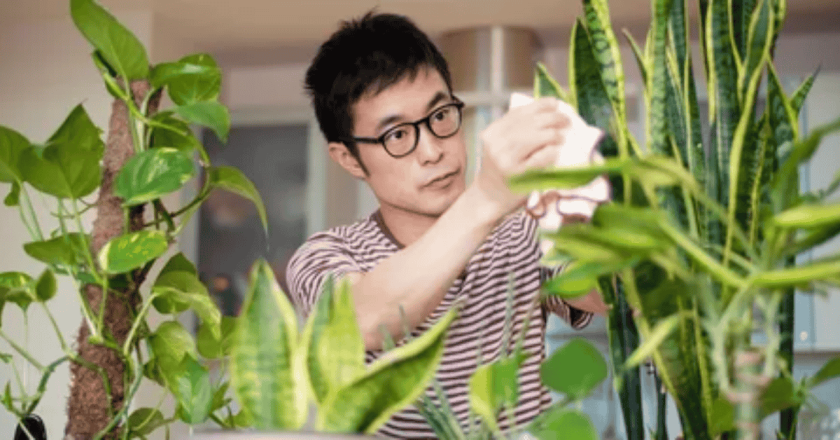There’s a moment every plant lover dreads. You water your plant, maybe even carefully, and yet something feels off. Leaves start yellowing. Growth slows. The soil stays damp for longer than it should. And when you finally pull the plant out of its pot, what you see isn’t the firm white roots you were hoping for but brown, mushy ones that break apart far too easily. That’s Root Rot.
But let’s not get ahead of ourselves. The term gets thrown around a lot, and it’s worth pausing for a second to ask: what is root rot, really?
At its core, root rot is both a symptom and a condition. It’s the breakdown of roots caused by too much moisture, poor oxygen circulation, and often fungal organisms. And while it sounds like a death sentence for your plants, with the right steps you can often turn things around—or at least prevent it from happening again.
What Is Root Rot?
Root Rot is essentially the decay of plant roots. It happens when roots, which need both water and air, sit in soil that’s too wet for too long. Without oxygen, roots suffocate. Weak, waterlogged roots are then easily attacked by fungi and bacteria that thrive in damp conditions.
It’s one of the most common plant problems, especially in houseplants. People often ask me, “But I watered exactly as the label said!” And that’s part of the challenge—watering schedules aren’t one-size-fits-all. Conditions, pot size, soil drainage, and plant type all play a role.
Fungal root rot, in particular, is triggered by pathogens like Pythium or Phytophthora. These names might sound intimidating, but they’re essentially opportunistic organisms waiting for the right soggy environment to flourish.
Causes of Root Rot
There isn’t just one culprit. Causes of root rot often stack on top of each other:
-
Overwatering plants – easily the number one cause. Roots drown when they’re always wet.
-
Soil drainage issues – heavy, compacted soil or pots without drainage holes keep water trapped.
-
Poor airflow – roots need oxygen; waterlogged soil suffocates them.
-
Fungal root rot – pathogens move in when roots are weakened by excess moisture.
-
Environmental stress – inconsistent watering, sudden changes in temperature, or leaving plants in dark corners all weaken root health.
If you’ve ever kept a Peace Lily too damp, you know how quickly it sulks. (Here’s a Peace Lily care guide if you need to balance moisture better.)
How to Identify Root Rot
So how do you know if your plant is in trouble underground? You can’t always see the roots right away, but root rot symptoms show above the soil, too.
-
Yellowing leaves: Not the healthy fade of old foliage, but widespread yellowing.
-
Wilting despite wet soil: The plant looks thirsty, but watering doesn’t help.
-
Stunted growth: New leaves are small, or growth stops altogether.
-
Mushy, smelly roots: Upon inspection, the roots are brown or black, soft, and may have a sour odour.
I’ve pulled up plants thinking they were fine, only to find the root ball breaking apart in my hands. That’s the surest way to identify root rot.
It’s worth noting that different plants react differently. A Money Tree may yellow quickly, while succulents often collapse suddenly after hiding the issue for weeks.
Root Rot in Houseplants vs Outdoor Plants
Both are vulnerable, but the conditions differ.
-
Houseplant root rot often comes from pots without drainage holes, compact soil, or owners (myself included, once upon a time) being too generous with watering. Indoor plants like the Snake Plant or Christmas Cactus are tough but not invincible.
-
Root rot in outdoor plants is more likely during heavy rains or when soil drainage is naturally poor. Clay-heavy soil, for example, retains water near the roots.
Both situations highlight the same lesson: roots need moisture but not constant saturation.
How to Treat Root Rot
The sooner you act, the better the chances of saving plants from root rot. Here’s the process I usually follow:
-
Remove the plant from the soil. Don’t hesitate—get it out.
-
Inspect the roots. Healthy roots are firm and white. Rotten ones are mushy, brown, and break easily.
-
Trim away the damage. Sterilize your scissors or pruners, then cut off all the affected roots. Be ruthless. Leaving rotted roots behind will only spread the problem.
-
Wash the healthy roots. Rinse gently to remove fungal spores and soggy soil.
-
Repot with fresh soil. Use a well-draining mix, ideally one suited for the plant type. Pots should always have drainage holes.
-
Water carefully. After repotting, give the plant a small drink, then let it recover with space to breathe.
This approach has saved more than one of my plants. It won’t always work if rot is too advanced, but it gives your plant the best chance.
Root Rot Prevention
Like most plant issues, prevention is far easier than cure. Root rot prevention means focusing on three main areas:
-
Soil: Use mixes that drain well. For succulents, sandy or gritty soil works best. For tropicals, looser potting mixes with perlite or bark help.
-
Containers: Always, always use pots with drainage holes. Decorative cachepots are fine, but keep plants in breathable nursery pots inside them.
-
Watering: Learn your plant’s rhythm. Stick your finger into the soil—if it feels wet below the surface, hold off.
Low-maintenance choices also reduce risk. Plants like those on this list of low-maintenance growers or best outdoor plants for busy gardeners are more forgiving.
Plant Care Tips to Reduce Root Rot Risk
-
Rotate indoor plants periodically to ensure all sides receive equal light.
-
Avoid letting pots sit in saucers of standing water.
-
In outdoor gardens, improve drainage by adding organic matter or raised beds.
-
Consider grouping plants with similar watering needs together.
Sometimes it helps to think of roots as lungs—they need to breathe, not drown.
The Emotional Side of Losing Plants
It’s easy to get technical, but I think most of us know the feeling of disappointment when a plant doesn’t make it. I once lost a gorgeous hydrangea in a pot outside after weeks of heavy rain. It was discouraging. But these failures also teach us something about resilience and care. Even when you can’t save one, the experience helps you prevent losing the next.
And sometimes, plants surprise you. I had a Peace Lily once that I was sure was gone. I trimmed back everything, changed the soil, and weeks later, a new leaf pushed up. A reminder that life has its own stubbornness.
When to Let Go
Not every plant can be saved. If all the roots are mushy or if the rot has spread far up the stem, sometimes the best option is to compost what’s left and start over. It’s not failure—it’s part of gardening. And honestly, it frees up a pot for your next adventure.
🌿 Key Takeaways
-
Root Rot is a common plant problem caused by overwatering, poor drainage, and fungal infections.
-
Key symptoms of root rot include yellowing leaves, wilting despite moist soil, and mushy, foul-smelling roots.
-
The best way to treat root rot is by trimming damaged roots, washing healthy ones, and repotting into fresh, well-draining soil.
-
Root rot prevention is easier than treatment—focus on proper watering, good potting mix, and containers with drainage holes.
-
Both houseplants and outdoor plants can be affected, but quick action and healthy soil habits usually save them.
🌱 Final Thought
Dealing with Root Rot can feel discouraging, exceptionally when you’ve cared for a plant for months or years. Yet it’s also one of the best teachers in the field of gardening. It shows us how easily too much love—in the form of overwatering—can hurt, and how small adjustments in soil or drainage can make all the difference. Not every plant can be saved, and that’s part of the process, but many bounce back stronger than before. In a way, root rot reminds us that resilience comes from balance: water, air, patience, and observation. If you carry that lesson forward, your garden will thrive—and so will you as a gardener.
❓ FAQs
Q1. What causes Root Rot most often?
The most common causes are overwatering plants and soil drainage issues, which create ideal conditions for fungal growth.
Q2. How can I identify root rot early?
Look for root rot symptoms like yellowing leaves, slow growth, or wilting even when soil is damp.
Q3. Can Root Rot be reversed?
Yes—if caught early. Remove affected roots, repot with fresh soil, and adjust watering habits.
Q4. Does Root Rot affect outdoor plants, too?
Absolutely. Root rot in outdoor plants often occurs after heavy rain or in soils with high clay content and poor drainage.
Q5. How do I prevent Root Rot long-term?
Use well-draining soil, ensure pots have drainage holes, water only when needed, and watch for signs of unhealthy roots.




